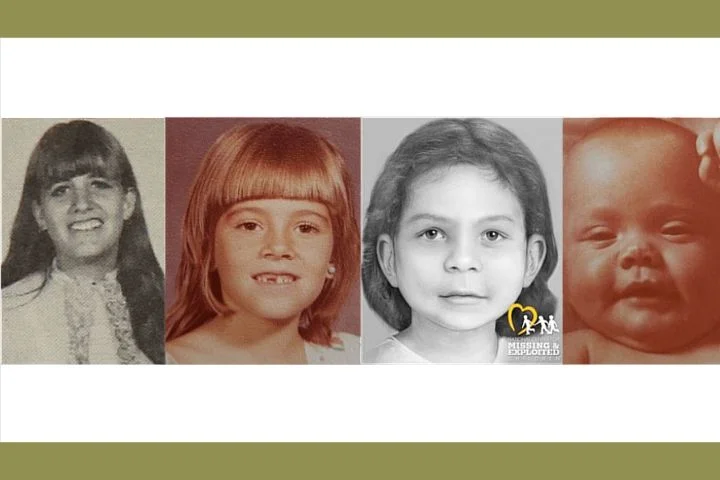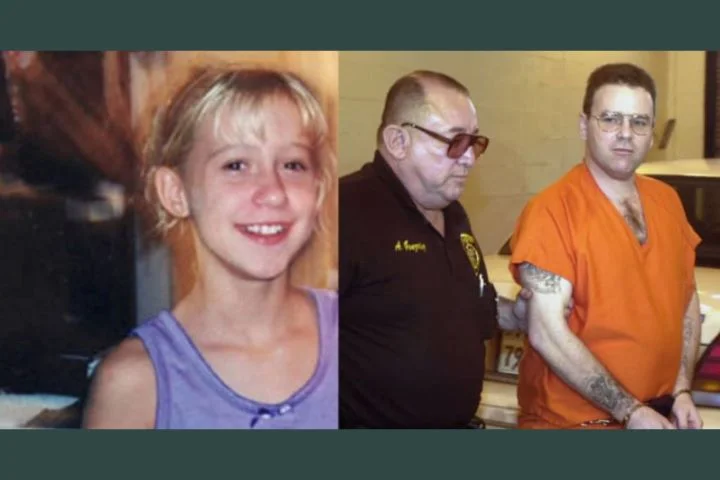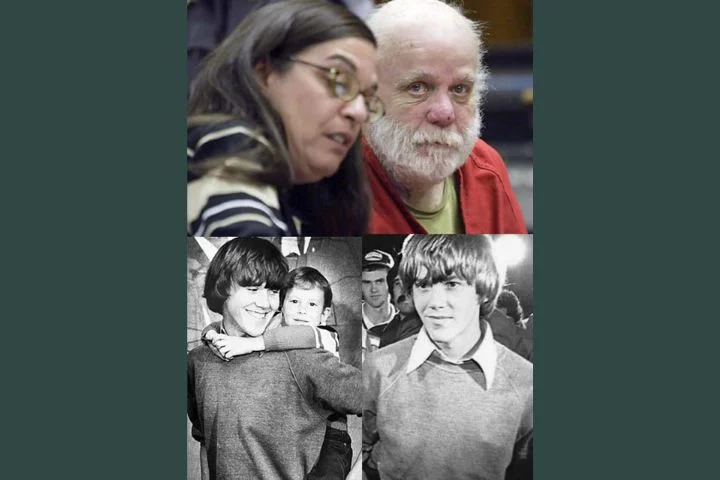The Bear Brook murders, also known as the Allenstown Four, involve the tragic d*aths of four female American victims. Two were found in 1985, and the other two in 2000, all in Bear Brook State Park, Allenstown, New Hampshire, USA. These victims had mostly turned into skeletons and were believed to have passed away between 1977 and 1981.
In 2017, investigators pointed to Terry Peder Rasmussen as the primary suspect. DNA from his first marriage’s son confirmed his identity. Additionally, DNA testing established him as the father of one of the young girls among the Bear Brook victims. Rasmussen is also linked to several other m*rders, including that of Denise Beaudin, his known girlfriend, who vanished in 1981. He was convicted and sentenced for the m*rder of his then-wife, Eunsoon Jun, in 2002 and d*ed in prison in 2010.
In 2019, the three related females were identified as a mother, Marlyse Elizabeth Honeychurch, and her two daughters from different biological fathers, Marie Elizabeth Vaughn and Sarah Lynn McWaters, last seen in November 1978. The middle child, confirmed as Rasmussen’s daughter, remains unidentified. Considering the date they disappeared, available documents, and Rasmussen’s activities, it’s likely these victims perished between 1978 and 1981.
Discovery of remains

On November 10, 1985, a hunter stumbled upon a 55-gallon metal drum near the location of a burned-down store in Bear Brook State Park, Allenstown, New Hampshire. Inside the drum were the lifeless bodies of an adult woman and a young girl, both wrapped in plastic. Autopsies determined that their d*aths resulted from blunt trauma. They were laid to rest in an Allenstown cemetery, their tombstone bearing the inscription: “Here lies the mortal remains known only to God of a woman aged 23-33 and a girl child aged 8-10. Their slain bodies were found on November 10th, 1985, in Bear Brook State Park. May their souls find peace in God’s loving care.”
On May 9, 2000, the remains of two young girls were discovered near the initial finding site. These bodies were also inside a metal 55-gallon drum. Investigators believe that all four murders occurred around the same time, even though they inexplicably missed finding the second drum in 1985. According to them, it took so long to recover the second drum because it was located outside the vicinity of the initial crime scene. The children in the second drum also suffered fatal injuries from blunt force trauma.
Examination
The adult, later identified as Honeychurch, was determined to be Caucasian with possible Native American ancestry. She was estimated to be between 23 and 33 years old at the time of her d*ath. Her hair was curly or wavy and brown, and she stood between 5 feet 2 inches (1.57 meters) and 5 feet 7 inches (1.70 meters) tall. Her dental records showed significant dental work, including multiple fillings and three extractions.
The three girls were believed to have some Native American heritage, although they had light or European-American complexions.
The girl found alongside the adult female, later identified as Vaughn, was estimated to be between 5 and 11 years old. She exhibited symptoms of pneumonia, had a crooked front tooth, a diastema (gap between her top teeth), two earrings in each ear, and stood between 4 feet 3 inches (1.30 meters) and 4 feet 6 inches (1.37 meters) tall. Her hair was wavy and light brown, and she had no dental fillings.
The middle child, who remains unidentified, also had a gap between her front teeth and passed away between the ages of 2 and 4. She had brown hair and was approximately 3 feet 8 inches (1.12 meters) tall. An overbite, likely noticeable, was also part of her dental features, and she might have suffered from anemia. DNA analysis indicated that Terry Peder Rasmussen was her father. In February 2020, it was revealed through DNA analysis that the child was primarily Caucasian with slight traces of Asian, African, and Native American heritage. An updated facial reconstruction of the child was subsequently released by the organization.
The youngest girl, later identified as McWaters, was estimated to be 1 to 3 years old when she passed away. She had long blond or light brown hair, was between 2 feet 1 inch (0.64 meters) and 2 feet 6 inches (0.76 meters) tall, and also had a gap between her front teeth.
Investigation of case
In the early stages of the investigation, authorities in the United States and some parts of Canada made efforts to publicize the case. They ruled out at least ten possible identities but struggled to identify the bodies, despite pursuing hundreds of leads.
In June 2013, the National Center for Missing & Exploited Children created new facial reconstructions of the victims. These reconstructions took into account their dental information, showing how their teeth might have influenced the appearance of their faces. These reconstructions were presented in black and white because their skin tones and eye colors could not be determined.
In November 2015, a third set of reconstructions for the four victims was released by the National Center for Missing & Exploited Children during a news conference held at the New Hampshire State Attorney General’s office.
Regarding DNA and isotopic evidence, in 2014, police announced that DNA profiling revealed a maternal relationship between the woman and the oldest and youngest girls. This indicated that the woman could have been the girl’s mother, aunt, or older sister. In 2015, the woman was positively identified as the mother of the two girls.
Additional forensic information indicated that the woman and the children had lived together in the Northeastern United States for a period ranging from two weeks to three months before their deaths. Investigators concluded that the woman and two of the children had resided in the area where their bodies were found. Advanced forensic analysis suggested that the 2-to-4-year-old girl, who was later identified as Rasmussen’s daughter, likely spent most of her childhood in either the upper Northeast or upper Midwest, possibly in Wisconsin.
However, in 2019, it was suggested that the nonrelated child most likely originated from Arizona, Texas, California, or Oregon, although other locations could not be entirely ruled out.
Later development
In January 2017, it came out that Denise Beaudin, who had disappeared in 1981, was connected to some m*rders. Beaudin went missing from Manchester, New Hampshire, with her daughter and boyfriend Robert “Bob” Evans. Evans later left a young girl named “Lisa” at a campground, but she wasn’t his daughter. Beaudin’s disappearance was only reported in 2016 when her daughter reappeared in California after the murders and Beaudin’s case got more attention. The daughter has kept her name secret.
The National Center for Missing & Exploited Children later said that an unidentified man, known as “Robert Evans,” was found through DNA to be the father of one of the children, who wasn’t related to the other victims. Authorities suspected Evans as the killer of the four Bear Brook victims but didn’t provide more details.
In 2018, authorities revealed that the Bear Brook woman was not Beaudin, and “Robert Evans” was a fake name; his real identity remained unknown.
Evans passed away in prison in December 2010, having been convicted as Evans for the 2002 m*rder and dismemberment of his wife, Eunsoon Jun, a chemist in California.
In June 2017, the police released a video of an interview with Evans, hoping to discover his true identity. Two months later, he was confirmed as Terry Peder Rasmussen through Y-DNA testing, thanks to a sample contributed by one of his sons from his first marriage. Rasmussen was born in 1943 in Denver, Colorado, and had four children. His family last saw him around Christmas 1974. He is known as the Chameleon killer and used various aliases in crimes across the country, including at least five homicides.
Identification
In June 2019, New Hampshire investigators held a press conference revealing the identities of three victims: Marlyse Elizabeth Honeychurch, the mother of Marie Elizabeth Vaughn, and Sarah Lynn McWaters, all of whom disappeared in La Puente, California, around Thanksgiving 1978 while dating Rasmussen. Honeychurch may have used the alias “Elizabeth Evans” in legal documents in May 1980. It’s believed that all four victims were murdered before 1981, as Rasmussen left New Hampshire after that time.
Sarah’s half-brother posted on Ancestry.com in 1999 to locate her, leading to the identification of the victims. Marlyse had married Marie’s father in 1971 and divorced by 1974. She married Sarah’s father in 1974, and by October 1978, Sarah’s father was seeing another woman.
Honeychurch and Vaughn were laid to rest in November 2019 in Allenstown, and Sarah was buried in Connecticut closer to her father’s family.
The identity of the fourth victim remains unknown, but DNA testing confirmed she was Rasmussen’s child. Investigators are still trying to identify her mother and whether she may still be alive. In February 2020, a new rendering of the fourth victim was released, and in 2021, investigators linked her to Pearl River County, Mississippi, likely a descendant of Thomas “Deadhorse” Mitchell, born in 1836.
Rasmussen’s daughter, Andrea Stiers, believes she met Jane Doe when she was very young, describing her as cute and possibly half-Asian. Stiers thinks Rasmussen spared her because she resembled him, unlike Jane Doe.





